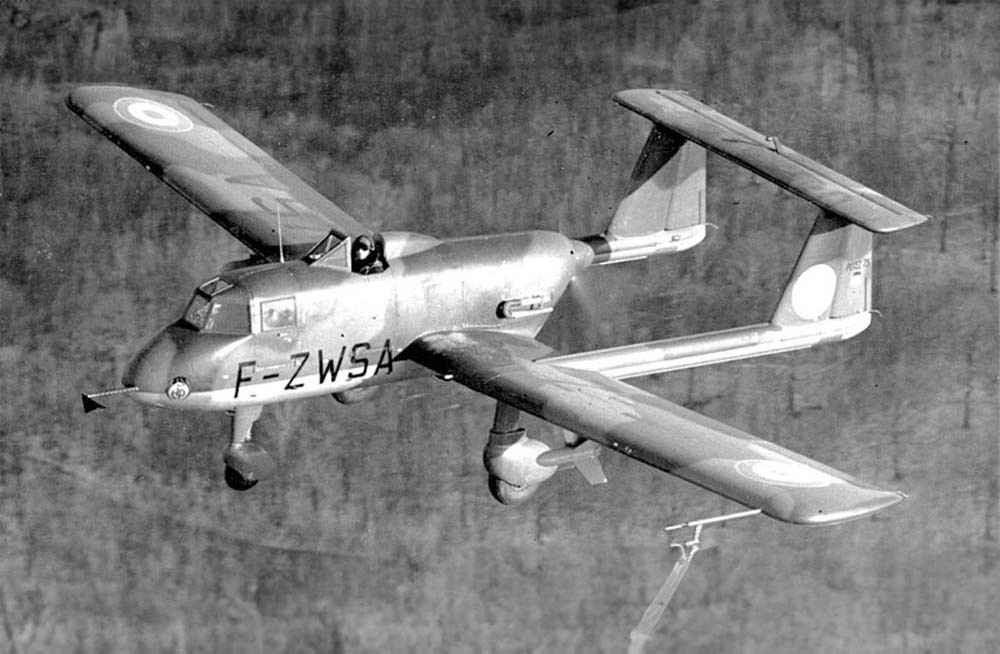The Potez 75 was a French light attack and observation aircraft, distinguished by its STOL capabilities and robust design.
In brief
The Potez 75, developed in France during the 1950s, was a multi-role aircraft primarily designed for light attack and observation missions. It was notable for its Short Takeoff and Landing (STOL) capabilities, which made it suitable for operation in rugged terrains and unprepared fields. The aircraft was a response to the need for versatile and efficient support in various military operations, particularly in colonial territories. Its design was pragmatic, emphasizing simplicity, reliability, and ease of maintenance. Despite its potential, the Potez 75 had a limited production run and saw only modest operational use, primarily within the French military.
The Potez 75’s development and operational history offer insights into military aviation trends and requirements during the mid-20th century, especially in the context of post-World War II conflicts and colonial warfare.
History of the Development of the Potez 75
In the post-World War II era, France faced numerous military challenges, particularly in its colonial territories. There was a pressing need for a versatile aircraft that could provide effective support in these regions, which often lacked developed airfields and infrastructure.
The Potez 75 program was initiated by the Potez company to meet these requirements. The aim was to develop an aircraft that was capable of operating in diverse and challenging environments, providing reconnaissance, light attack, and observation capabilities.
The aircraft first flew in 1953. Its development was characterized by an emphasis on robustness, flexibility, and cost-effectiveness, aligning with the operational needs of the French military during that period.
While the Potez 75 did not achieve widespread fame or extensive production, it represented a key effort in developing tactical aircraft suitable for unconventional and low-intensity conflicts, a common theme in the mid-20th century.

Design of the Potez 75
The design of the Potez 75 was pragmatic and functional. It featured a high-wing configuration for better visibility and STOL capabilities. The aircraft was powered by a single engine and had a tricycle landing gear, unusual for its time.
The Potez 75’s STOL capabilities and rugged design were significant advantages, allowing it to operate from short and unprepared airstrips. However, these same features limited its speed and range compared to more conventional aircraft of the era.
The aircraft’s design contributed to the understanding of STOL capabilities in military aviation, particularly in the context of counter-insurgency and support operations in remote areas.
Performance of the Potez 75
The Potez 75 was powered by a piston engine, which provided adequate power for its light attack role. It had a moderate top speed and range, sufficient for short-range missions and operations in confined spaces.
In comparison with contemporary aircraft such as the American Cessna O-1 Bird Dog, the Potez 75 was more focused on STOL and rugged terrain operations, sacrificing speed and range for operational flexibility.
Variants of the Potez 75
The Potez 75 had limited variants due to its short production run. These variants mainly differed in terms of engine type and minor modifications in avionics and armament configurations.
Military Use and Combat of the Potez 75
The Potez 75 was primarily used by the French military, serving in roles that required agility and adaptability in challenging environments. It was equipped with light armaments suitable for reconnaissance and ground support missions.
The aircraft saw limited action, mainly in French colonial conflicts, where its capabilities were well-suited to the operational requirements. It was not widely exported or used in significant conflicts, leading to its relatively obscure place in aviation history.
The Potez 75, while not widely known or extensively used, represents an important facet of military aviation history. It embodied the specific needs of its era, particularly in terms of operational flexibility and adaptability to challenging environments. Its development highlights the diverse requirements and innovations in post-World War II military aviation, especially in the context of evolving warfare tactics and colonial conflicts.
Back to the Spy Planes section.